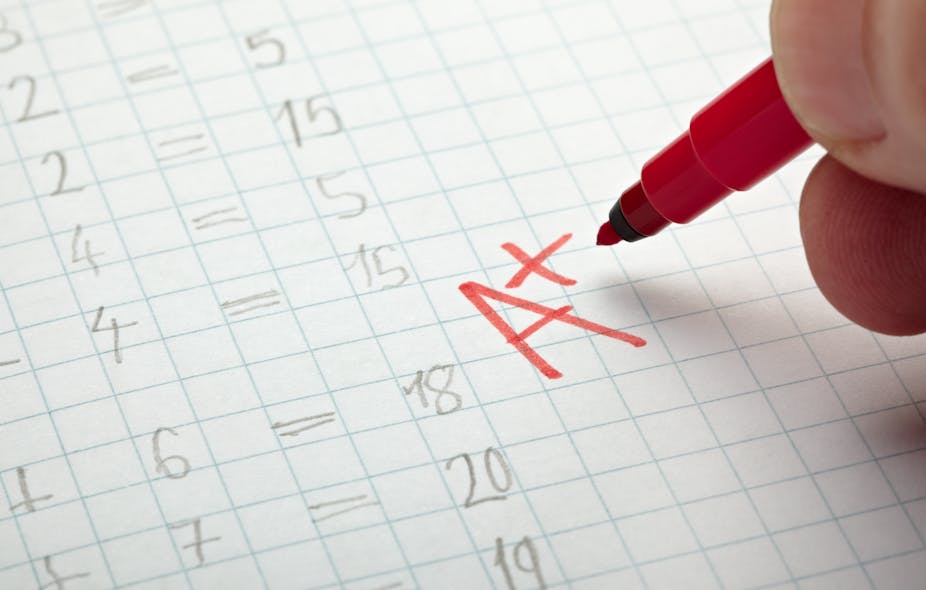The most recent edition of the OECD’s Education at a Glance released this week, is another report that has invariably been seen as a report card on Australian education.
Australians want to know: how did we do? What grade did we get? Did we do better than our neighbours?
The report provides information about each OECD country’s levels of schooling, participation, finance, class size and teacher involvement. But rather than focusing on where we rank on the world stage, we should look at some of the bigger issues revealed in the report.
Above average
The report doesn’t say anything most experts don’t already know about Australian education.
In general the report shows, as expected, Australia is above average. We have a pupil-teacher ratio in secondary education of 12 to 1 compared to an OECD average of 13.8 to 1. We have more hours of compulsory instruction time per year for school students than the average for OECD countries.
Annual expenditure per student is marginally higher for schooling than the OECD average. For school teachers, salaries represent 92% of full-time adult workers with tertiary qualifications which is above the OECD average.
While these comparisons are interesting, it is more appropriate for Australia to set its own targets for comparison rather than draw satisfaction from a comparison with an average of a selection of countries, many of which are very different in many ways to Australia.
What we should be looking at
What is underlying these annual OECD reports is the idea that education is a sound investment for both individuals and society and that universal completion of upper (senior) secondary is crucial for reducing life-long inequity. It is this second aspect about which that Australians should be more informed.
The report indicates that 70% of potential year 12 students graduated in 2009. This is above the OECD average. But included in Australia’s graduates are those completing what is considered equivalent to year 12 – VET Certificate II for example. But this certificate can be, and is, completed by students during year 10 or 11 studies. So our true upper secondary graduation rate may be below the OECD general program average.
Further, what are the other 30% who do not complete year 12 doing? Many leave school to attend VET courses at TAFEs or Registered Training Organisations (RTOs), without the same support they would have had in school.
We should have a senior secondary graduation rate well above 90% of potential students, given the importance of graduation for life-long effective participation in society – an issue which was totally ignored in the Gonski Review into Schools Funding.
What can we do?
So, how can Australia lift its senior secondary graduation rate? First, we should ensure senior secondary education and training is equally available to all. Second, we should orovide similar resourcing for every student, whether enrolled at school, at TAFE, or at RTO.
Thirst, we need to restructure year 11 and 12 and VET Certificate III programs are a distinct senior secondary sector. In this we need to provide support for all students by attaching every student to the school with which they completed year 10 and provide these schools with resources to track and monitor the progress of students over their senior secondary years.
And finally, we need to make sure every school offering senior secondary programs has pathway agreements with other schools and VET providers so that a comprehensive range of senior secondary education and training programs are available to all students.
Individual states and territories have progressed to varying extent in the direction outlined above. But, all states will need to agree on common targets to be achieved if Australia as a whole is to reduce its senior secondary graduation inequality.

